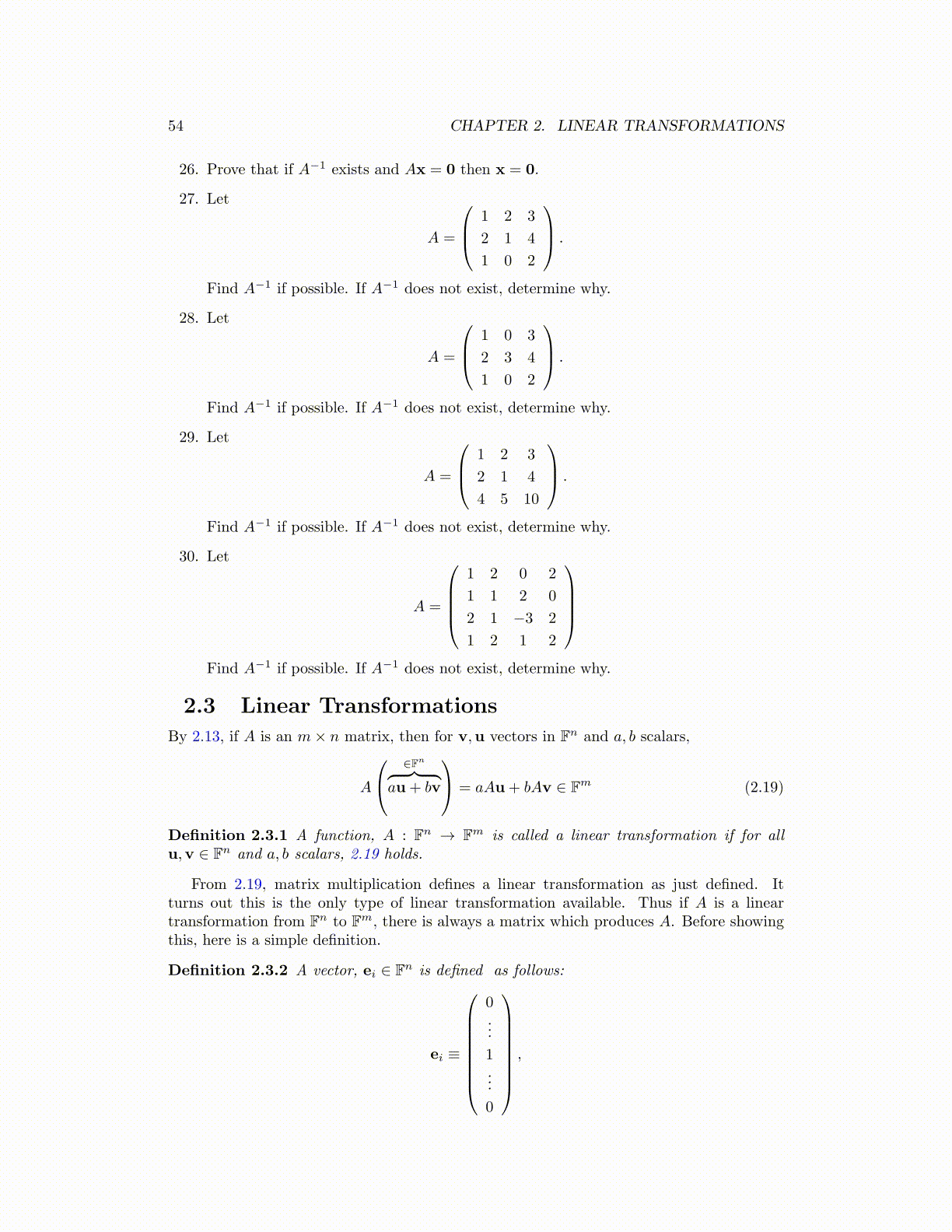
54 CHAPTER 2. LINEAR TRANSFORMATIONS
26. Prove that if A−1 exists and Ax = 0 then x = 0.
27. Let
A =
1 2 3
2 1 4
1 0 2
.
Find A−1 if possible. If A−1 does not exist, determine why.
28. Let
A =
1 0 3
2 3 4
1 0 2
.
Find A−1 if possible. If A−1 does not exist, determine why.
29. Let
A =
1 2 3
2 1 4
4 5 10
.
Find A−1 if possible. If A−1 does not exist, determine why.
30. Let
A =
1 2 0 2
1 1 2 0
2 1 −3 2
1 2 1 2
Find A−1 if possible. If A−1 does not exist, determine why.
2.3 Linear Transformations
By 2.13, if A is an m× n matrix, then for v,u vectors in Fn and a, b scalars,
A
∈Fn︷ ︸︸ ︷au+ bv
= aAu+ bAv ∈ Fm (2.19)
Definition 2.3.1 A function, A : Fn → Fm is called a linear transformation if for allu,v ∈ Fn and a, b scalars, 2.19 holds.
From 2.19, matrix multiplication defines a linear transformation as just defined. Itturns out this is the only type of linear transformation available. Thus if A is a lineartransformation from Fn to Fm, there is always a matrix which produces A. Before showingthis, here is a simple definition.
Definition 2.3.2 A vector, ei ∈ Fn is defined as follows:
ei ≡
0...
1...
0
,